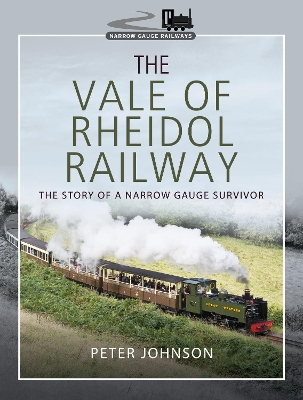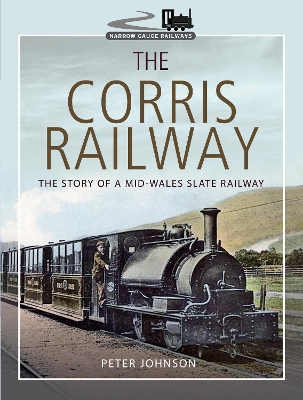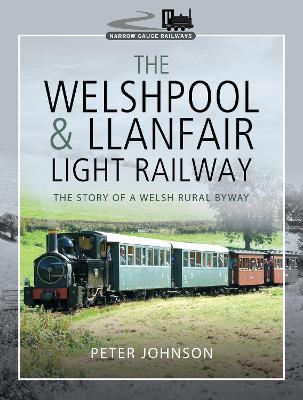Narrow Gauge Railways
5 total works
THE REVIVAL AND RESTORATION of the Welsh Highland Railway is one of the greatest heritage railway achievements of the 21st Century, yet its success followed more than one hundred years of failure.
Supported by public loans, its first incarnation combined the moribund North Wales Narrow Gauge Railways, some of the abandoned works of the Portmadoc, Beddgelert & South Snowdon Railway and part of the horse-worked Croesor Tramway. Opened in 1923, it was closed in 1937 and the track was lifted in 1941.
Serious talk of revival started in the 1960s but restoration did not start until 1997, with the neighbouring Ffestiniog Railway at the helm, supported by generous donors and benefactors, the Millennium Commission, the Welsh Government and teams of enthusiastic volunteers.
Author Peter Johnson steers a course through the railway's complicated pre-history before describing the events, including a court hearing, three public inquiries and a great deal of controversy, leading to the start of services between Caernarfon and Porthmadog in 2011. A postscript describes post-completion developments.
Supported by public loans, its first incarnation combined the moribund North Wales Narrow Gauge Railways, some of the abandoned works of the Portmadoc, Beddgelert & South Snowdon Railway and part of the horse-worked Croesor Tramway. Opened in 1923, it was closed in 1937 and the track was lifted in 1941.
Serious talk of revival started in the 1960s but restoration did not start until 1997, with the neighbouring Ffestiniog Railway at the helm, supported by generous donors and benefactors, the Millennium Commission, the Welsh Government and teams of enthusiastic volunteers.
Author Peter Johnson steers a course through the railway's complicated pre-history before describing the events, including a court hearing, three public inquiries and a great deal of controversy, leading to the start of services between Caernarfon and Porthmadog in 2011. A postscript describes post-completion developments.
Festiniog Railway: From Slate Railway to Heritage Operation, 1921-2014
by Peter Johnson
Published 30 October 2017
Built to carry minerals from mines in the Rheidol valley, the 2ft gauge Vale of Rheidol Railway found its niche carrying tourists to the tourist attraction at Devil's Bridge, 12 miles inland from the Cardigan coast resort of Aberystwyth. Taken over by the Cambrian Railways and then the Great Western Railway, it became the last steam railway operated by British Rail. In 1989 it became the first part of the national network to be privatised.
Now under the control of a charitable trust it is undergoing a revival that will see it become one of the leading tourist attractions in Mid-Wales.
Now under the control of a charitable trust it is undergoing a revival that will see it become one of the leading tourist attractions in Mid-Wales.
One of Wales' oldest narrow gauge railways, the 2ft 3in gauge Corris Railway was built to carry slate from several quarries in the Dulas valley to wharves on the river Dyfi. At first forbidden to use steam locomotives or to carry passengers, it overcame these obstacles and became an essential part of the community that it served.
It was also a forerunner in encouraging tourists, offering inclusive tours to nearby Talyllyn, passengers travelling on the train and on railway-operated road services.
Taken over by the Great Western Railway in 1930, the railway was closed by British Railways in 1948, apparently for good. Fortunately, the last two steam locomotives and some rolling stock was saved by the nearby Talyllyn Railway, where it played an essential role in that railway's preservation. Eventually, the thoughts of enthusiasts turned to reviving the Corris Railway, and, after many twists and turns, the first passengers were carried on a short section in 2002.
Historian Peter Johnson has delved into many sources to uncover the intricacies of the railway's origins, its development, operation and revival.
It was also a forerunner in encouraging tourists, offering inclusive tours to nearby Talyllyn, passengers travelling on the train and on railway-operated road services.
Taken over by the Great Western Railway in 1930, the railway was closed by British Railways in 1948, apparently for good. Fortunately, the last two steam locomotives and some rolling stock was saved by the nearby Talyllyn Railway, where it played an essential role in that railway's preservation. Eventually, the thoughts of enthusiasts turned to reviving the Corris Railway, and, after many twists and turns, the first passengers were carried on a short section in 2002.
Historian Peter Johnson has delved into many sources to uncover the intricacies of the railway's origins, its development, operation and revival.
Unusually among Welsh narrow-gauge railways, the 2ft 6in gauge Welshpool & Llanfair Light Railway was built to benefit agriculture, not minerals. After several failed attempts to connect the market town at Welshpool with the rural community around Llanfair Caereinion, the 1896 Light Railways Act paved the way for the railway which opened in 1902.
Operated by the Cambrian Railways and then by the Great Western Railway it became the only narrow-gauge steam railway catering for goods traffic under the auspices of British Railways. Sadly, it was closed in 1956 but enthusiasts ensured its revival, which started in 1963.
Overcoming many obstacles, the railway is now run by a charitable trust and is a leading volunteer-operated tourist attraction in Montgomeryshire.
Operated by the Cambrian Railways and then by the Great Western Railway it became the only narrow-gauge steam railway catering for goods traffic under the auspices of British Railways. Sadly, it was closed in 1956 but enthusiasts ensured its revival, which started in 1963.
Overcoming many obstacles, the railway is now run by a charitable trust and is a leading volunteer-operated tourist attraction in Montgomeryshire.



